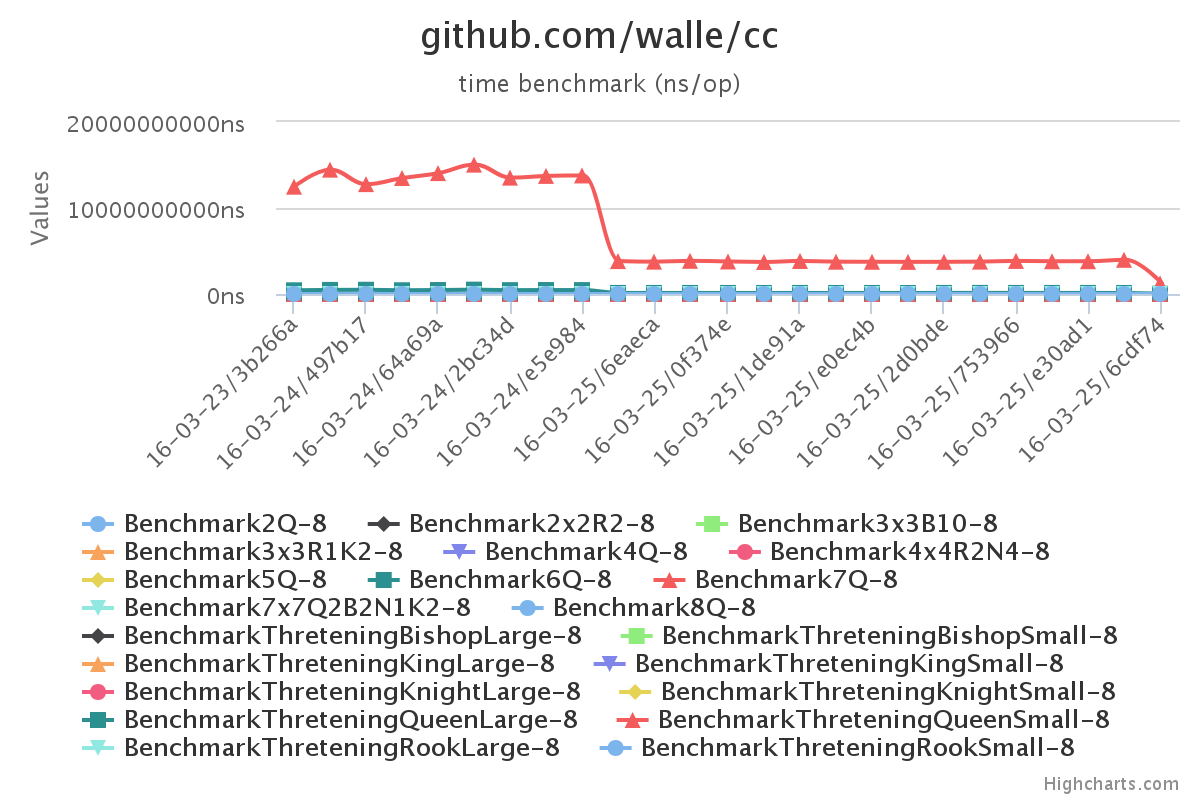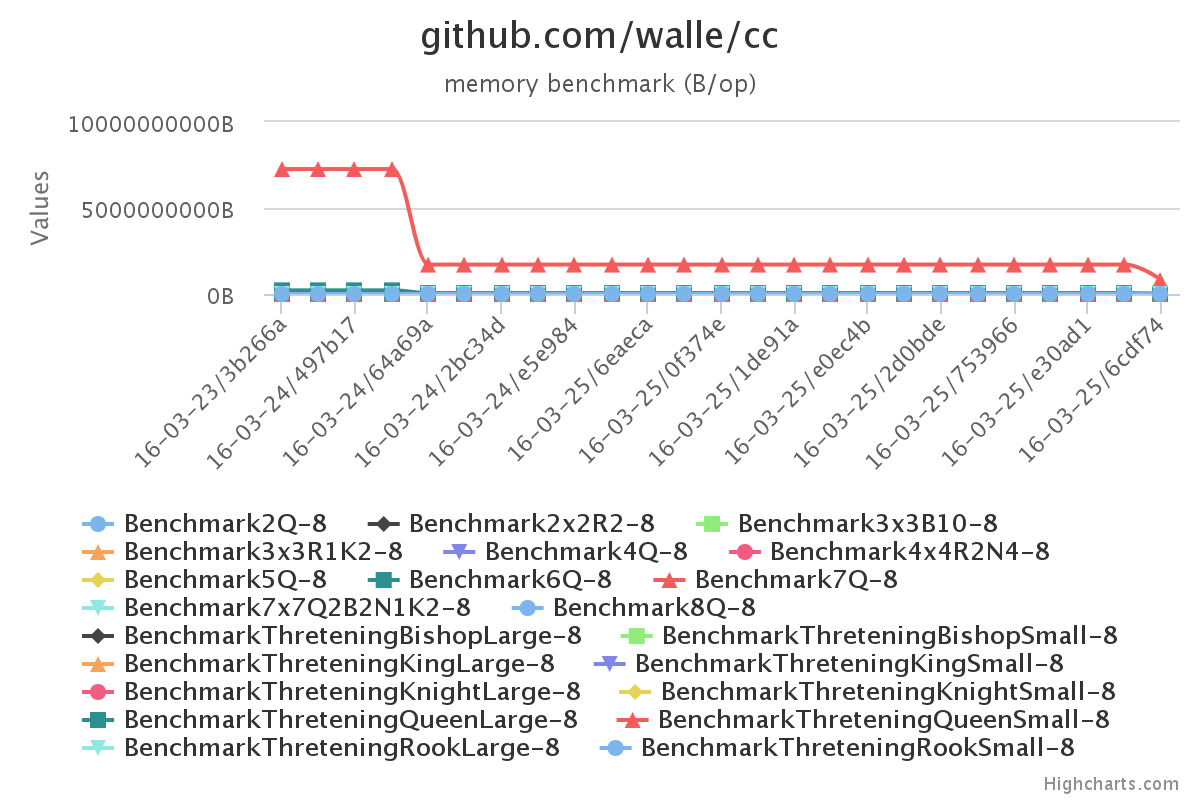Chess Challenge.
Find all unique configurations of a set of normal chess pieces on a chess board with dimensions M×N where none of the pieces is in a position to take any of the others. Assume the colour of the piece does not matter, and that there are no pawns among the pieces.
- The dimensions of the board: M, N
- The number of pieces of each type (King, Queen, Bishop, Rook and Knight) to try and place on the board.
A list of all the unique configurations to the console for which all of the pieces can be placed on the board without threatening each other.
The output is easily machine parsable in the format [number of configurations] comma separated list of the pieces and locations that ends with a semicolon for each solution, positions use common notation e.g. Ra1, Rb2; (the time it took to find the solution).
[2] Ra1, Rb2; Ra2, Rb1; (64.127µs)
The algorithm used is as follows.
- Start with an empty board.
- Find all cells where the next piece can be placed. First run this is every cell.
- For all possible cells, put the piece there and recurse down with the new configuration and find all possible cells.
- When there are no new pieces to place the configuration is a solution.
- If a piece cannot be placed anywhere go to the next possible solution.
$ go get github.com/walle/cc/...$ go get github.com/walle/cc/...
$ cd $GOPATH/src/github.com/walle/cc
$ go build -o cc cmd/cc/main.go
$ ./cc -husage: cc --columns COLUMNS --rows ROWS [--kings KINGS] [--queens QUEENS]
[--bishops BISHOPS] [--rooks ROOKS] [--knights KNIGHTS] [--notation NOTATION]
[--ascii]
options:
--columns COLUMNS, -c COLUMNS
the number of columns to use on the board
--rows ROWS, -r ROWS the number of rows to use on the board
--kings KINGS, -k KINGS
the number of kings to use on the board
--queens QUEENS, -q QUEENS
the number of queens to use on the board
--bishops BISHOPS, -b BISHOPS
the number of bishops to use on the board
--rooks ROOKS, -t ROOKS
the number of rooks to use on the board
--knights KNIGHTS, -n KNIGHTS
the number of knights to use on the board
--notation NOTATION convert notation to visualize a board as ascii
--ascii visualize in ascii instead of notation
--help, -h display this help and exitExample usage
$ cc -c 3 -r 3 -k 2 -t 1
[4] Rb1,Ka3,Kc3; Kc1,Ra2,Kc3; Ka1,Rc2,Ka3; Ka1,Kc1,Rb3; (110.17µs)$ cc -c 3 -r 3 -k 2 -t 1 --ascii
[4]
1
. R .
. . .
K . K
2
. . K
R . .
. . K
3
K . K
. . .
. R .
4
K . .
. . R
K . .
(348.274µs)
$ cc -c 7 -r 7 --notation Kb2,Ke2,Qg3,Na6,Bb6,Bc6,Qf7
. . . . . . .
. K . . K . .
. . . . . . Q
. . . . . . .
. . . . . . .
N B B . . . .
. . . . . Q .
Use the go test tool.
$ go test -cover ./...$ go test -bench=. -benchmem ./...The images are generated using gobenchui https://github.com/divan/gobenchui
Basically three events stand out.
- First naive solution, which uses a lot of memory and takes a lot of time.
- Changing data structure, time goes up a little but memory usage goes down.
- Using channels to run in parallell makes the time go down.
The code is under the MIT license. See LICENSE for more information.





